First, let’s keep in mind this is a sport and we are talking about 3 super models/athletes here, so we need a winner. If you are not here for the Gladiator, the Hunger Games, the last table standing…then all these tables are excellent.
In the Good, the Bad, and the Ugly, with three excellent characters and actors, one has to die, and one goes penniless. In fact, the least talented actor walks away with the gold.
All of us have levels of audiophile noise in our brains. A key one is to understand the differences between the pull of belt drives, the impulse of direct drives, and the push of idlers. At a lower price level, these are more easily audible, though TD 124, Garrard, Lenco, and EMT all sound different from each other, and each varies with the mods, and the EMT 927 is another category from the lower priced idlers. Many owners who have lived with the lower priced idlers have not experienced many of the higher priced belts – there are just too many of them. The differences in sound in belt drives, can sometimes be higher than the difference in sound between a TD 124 and a Garrard and a belt drive. And lovers of idlers and belts seldom own higher priced direct drives, they might have their negative experiences based on listening to a lower priced DD or a GPA Monaco. And yet, log on to a forum, and everyone is an expert on the differences in the three types.
Now, Mike has owned Rockport Sirius III (DD with a linear tracker), Dobbins Sp10 mk3, Dobbins Garrard 301, Kodo Beat, GPA Monaco, EMT 948 and Wave Kinetics NVS. He now still owns the NVS, the ultimate idler in Saskia, and the CS Port, which is a table with a string drive, heavy platter, and a low pressure low flow linear tracking tonearm.
Would the (jump to) conclusions drawn from compares of lower priced idlers and DDs and belts and forum reads hold true when all designs are stretched to the max? The key objective to visit Mike was to see if I could come up with a definitive answer. There are very few places in the world where you could get a such a compare of a high quality direct drives, idlers, and linear tracking belt drives.
This was my second visit to Mike’s, the first time was 6 years ago. https://zero-distortion.org/mike-lavignepuget-studiosjazdoc-evolution-acoustic-mm7/
I recently heard the CS Port Tat2 at Anamighty sound in Paris, and the CS Port LFT1 at Amadeus Audio in NL. The LFT1 had the Sumile on the linear tracker, and the Durand Tosca arm with a Lyra Atlas Lambda. I have heard the Lambda only once and is the first lyra I have found musical, along with the Olympos.
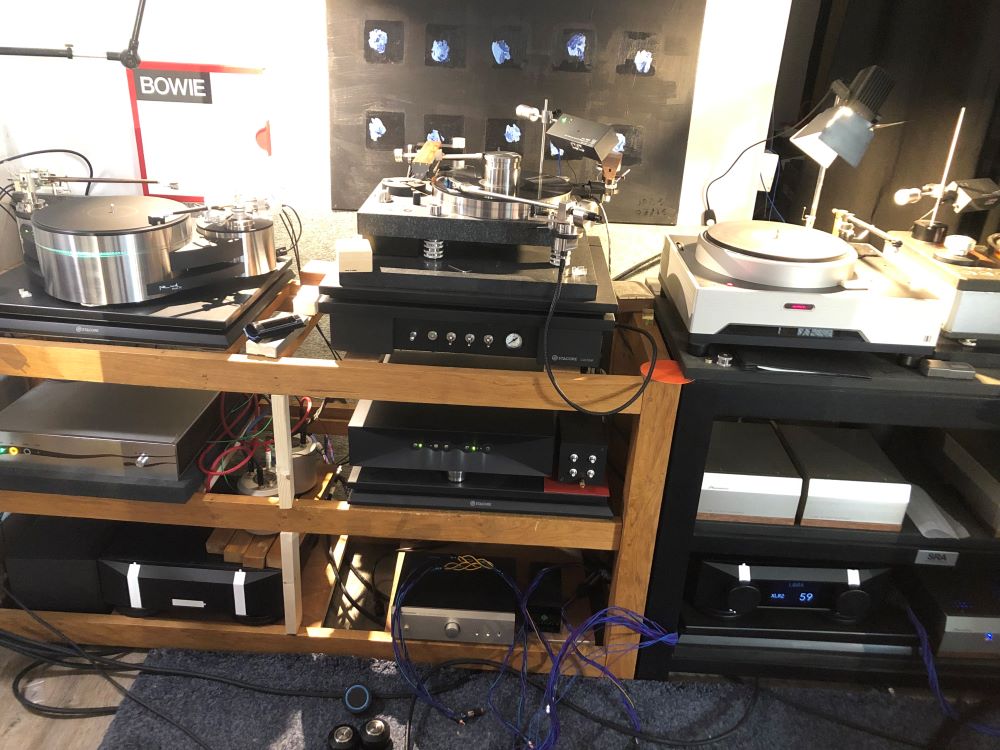
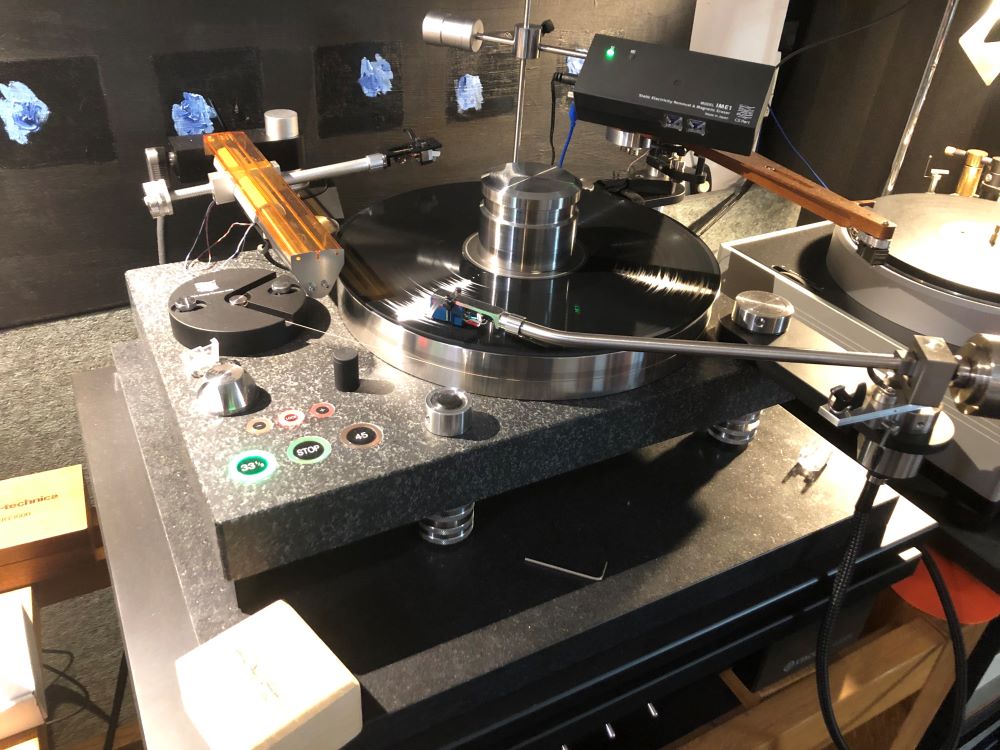
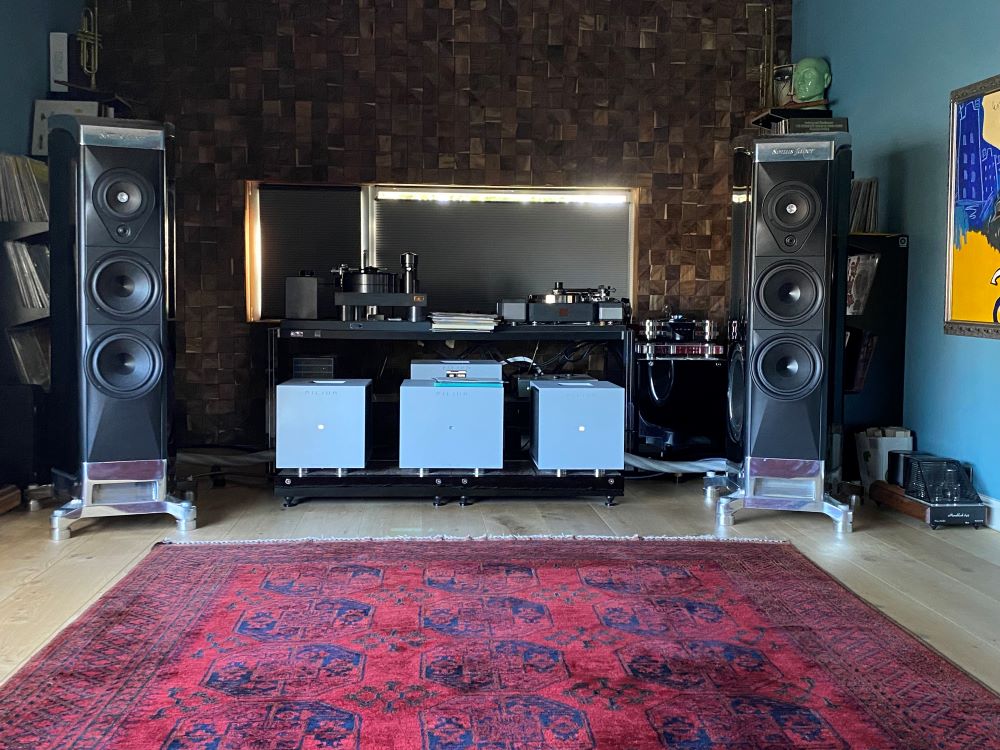
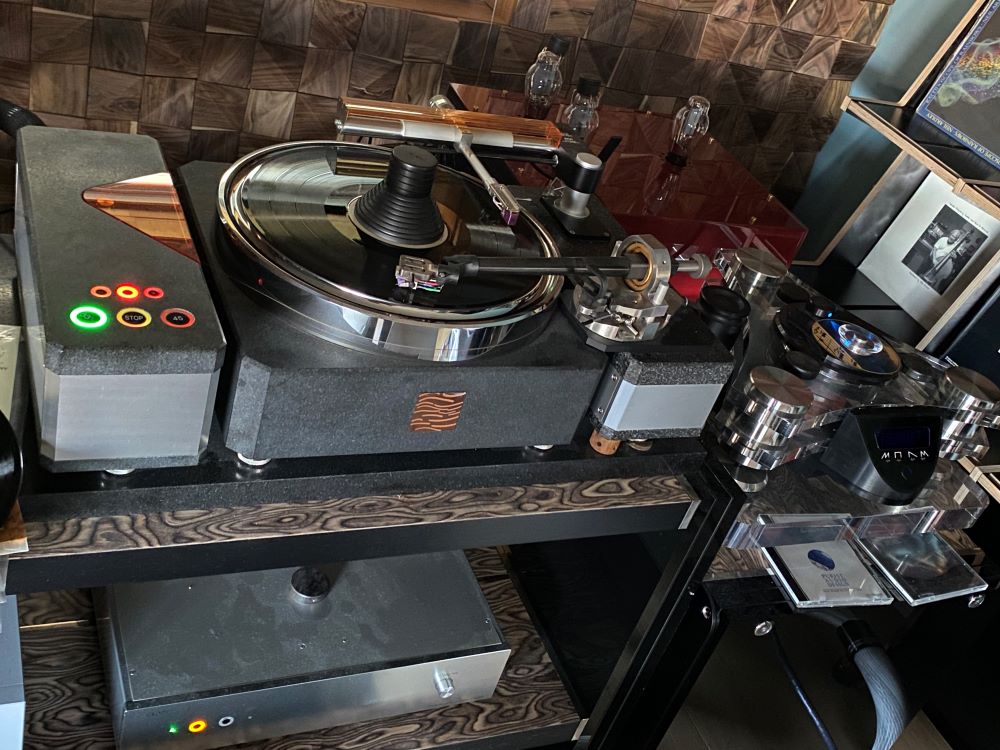
At Mike’s, The CS port had the Etsuro Gold Mk1, and the NVS had the Etsuro Gold Mk2. There are two models to Etsuro before the Gold, then there is the Etsuro Gold special Mk1 and the Mk2, both retail over 20k USD. o On the Saskia, mounted on a Durand Tosca, was the DaVa field coil reference, with a valve PSU, a cartridge sold direct from Lithuania with currently a 8 month queue due to customer demand. The direct cost is 8000 euro including the valve psu.
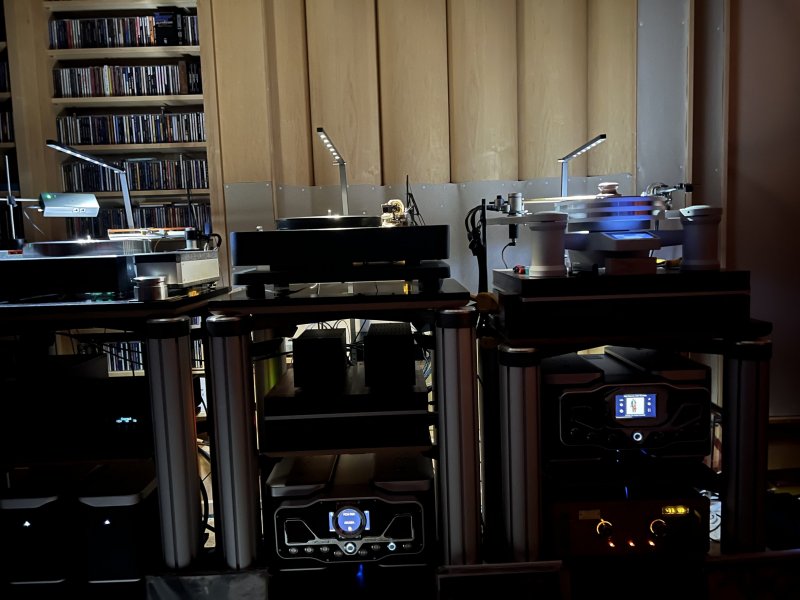
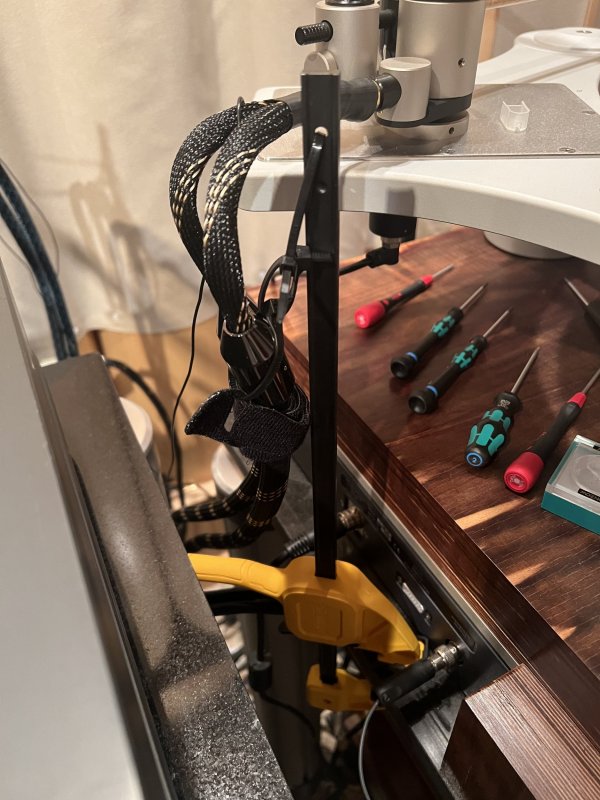
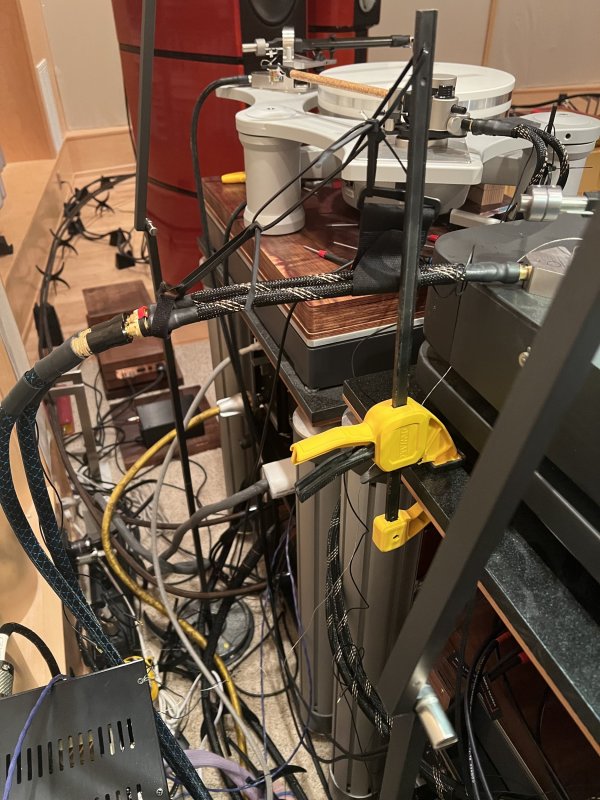
We played LPs on the CS and the NVS so we compared both on the Etsuro, and also played the LP on the Saskia DaVa. The exercise was carried from Friday to Sunday, with other members joining in on Saturday and Sunday, so while I had plenty of time to play my records, I could listen to what others played, and Mike played some of his own.
3 days later Mike and I met again, Mike had replaced the DaVa on the Saskia with the Etsuro Gold mk2 from the NVS, and we compared this to the CS, so that we could separate the Saskia and the DaVa holding CS as the constant.
All three went into the same phono, the EMIA, which had two 1:15 SUTs for the two Etsuros, and one 1:50 for the DaVa, all silver.
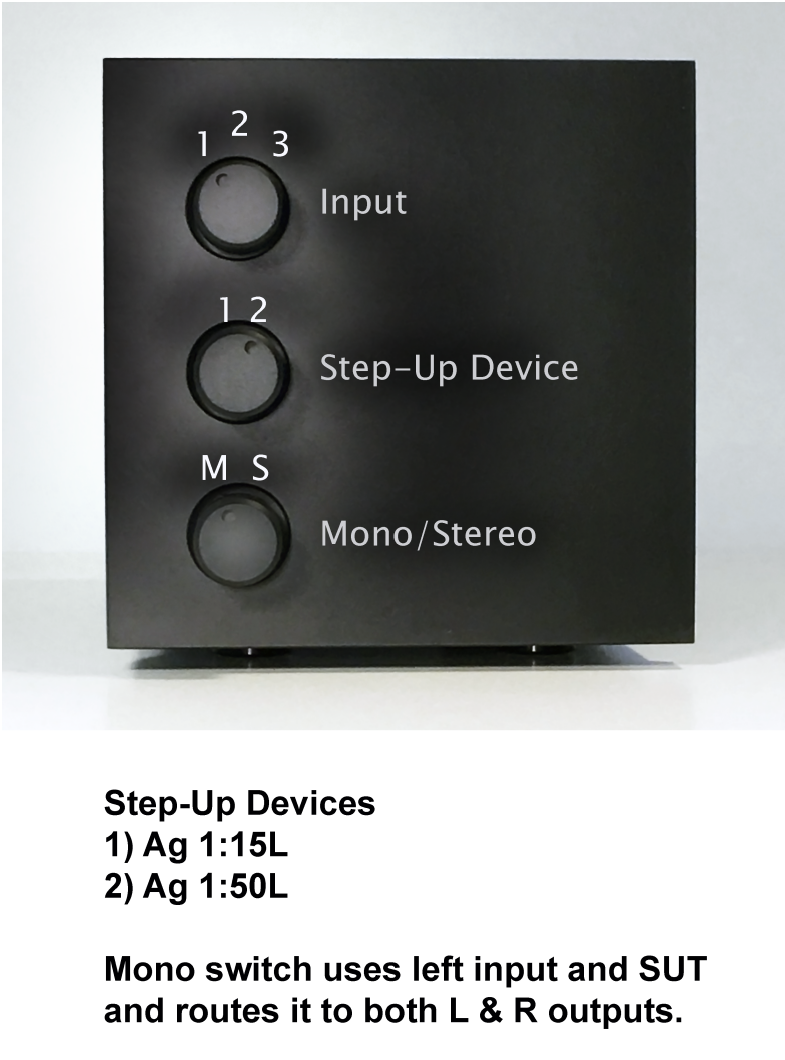
Wavekinetics NVS: Jonathan Tinn shared the partnership of Wave Kinetics with a retired Colonel whose Stanford classmate worked on robotics for NASA, approached his firm to make a Turntable, the firm had the scientific knowhow and capability to conduct research on making the best turntable they saw fit from scratch. NVS was the result.
This is the only high end direct drive I have liked so far (at a lower cost the suspended DD STST Motus II is excellent value for your money). NVS has a nice flow giving nothing away to the belts. There is no stop start character of hunt and seek. I was not able to isolate the Primary Control tonearm, but my gut said it was fluid and agile. Mike confirmed those points and said this is the best pivoted tonearm he has heard, and that it was also adding to the microdetails. Mike replaced the Durand arm he has had for many years with the Primary Control. Usually unipivots need something to prevent the tonearm from wobbling, e.g. the Durand Telos below has a bridge.
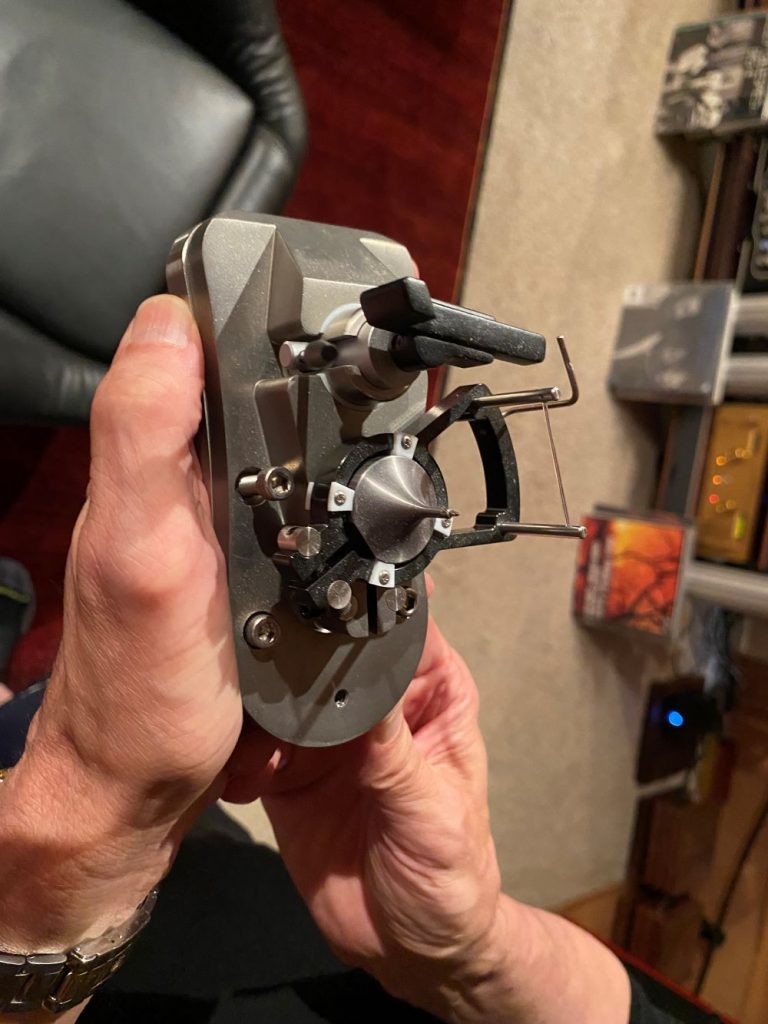
The Graham uses a magnet, other arms have their own strategies, and those who prefer unipivots consider gimballed a compromise. The Primary Control gets the benefit of the unipivot without adding another physical contraption to stop the wobble – it uses the field coil to provide stability to the arm.
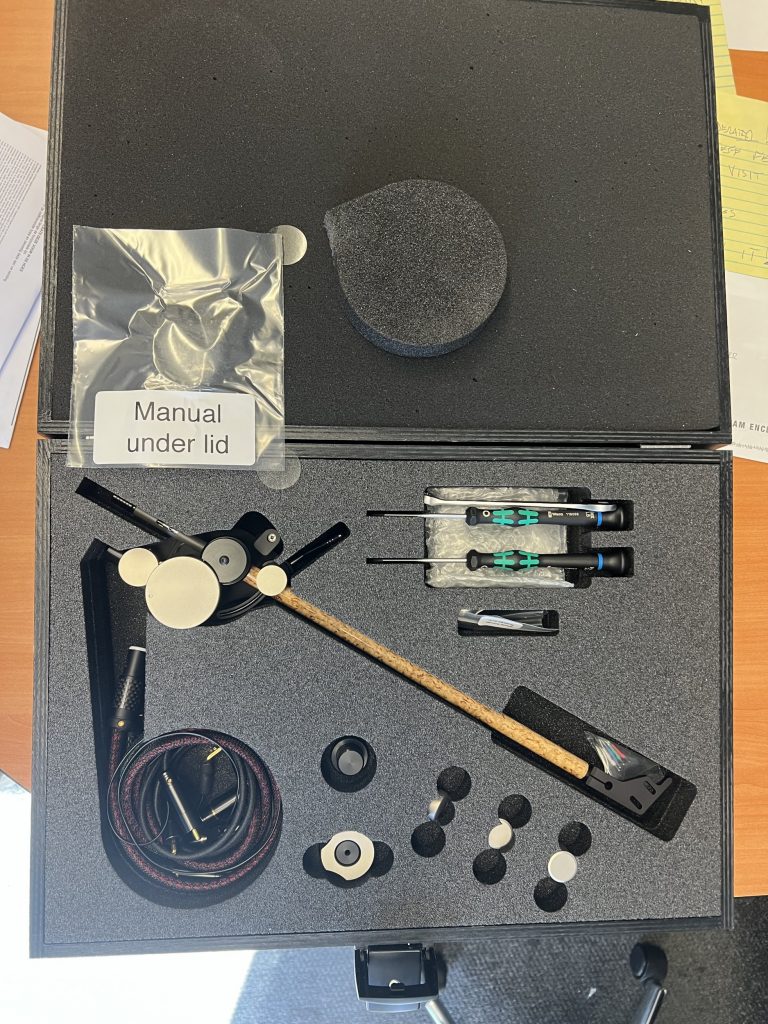
The DaVa: Now, for me the DaVa stole the show. The DaVa probably makes more of a difference to the analog than any other item. Other things have matured…in phonos, I can have Allnic, Mayer, EMT, Misho…it is a question of price, flexibility, and some taste preference. Likewise choosing your table is based on these fronts and the ability to gain exposure to tables. But DaVa is causing a jump in resolution that is quite significant, and creates a case for spending on lesser priced tables provided a DaVa is mounted on it.
A few months earlier, when I visited Vess I Bulgaria, he had the TD 124 with a DaVa and a Continuum Caliburn with the Etsuro Gold playing through YG Anat III, MSB amps, Aries Cerat phono and preamp.
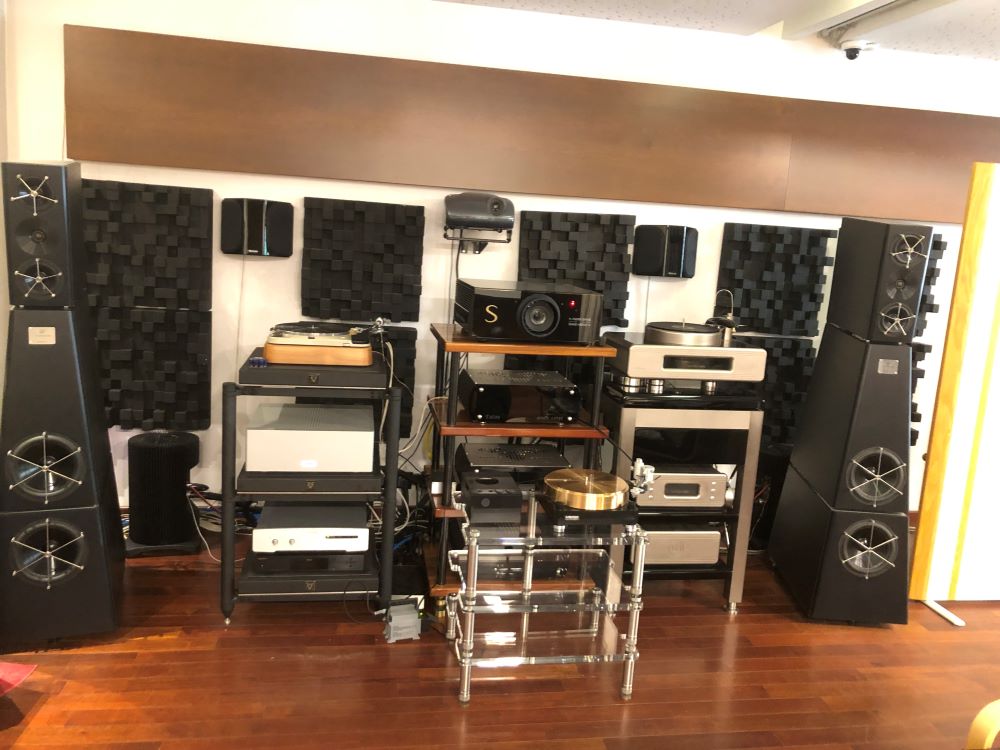
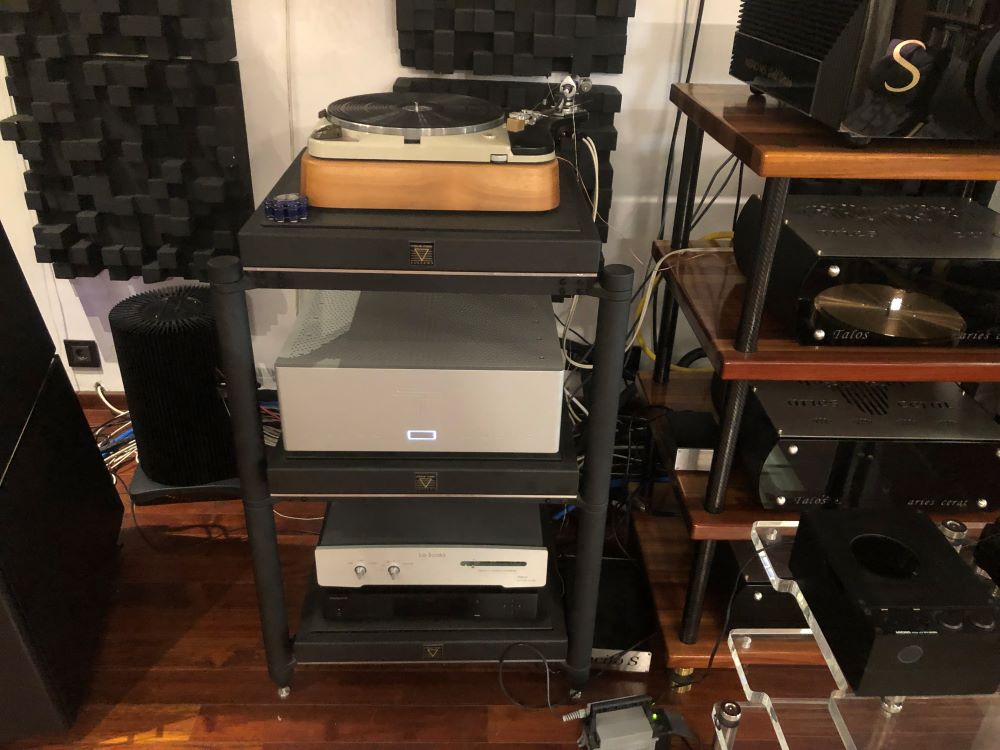
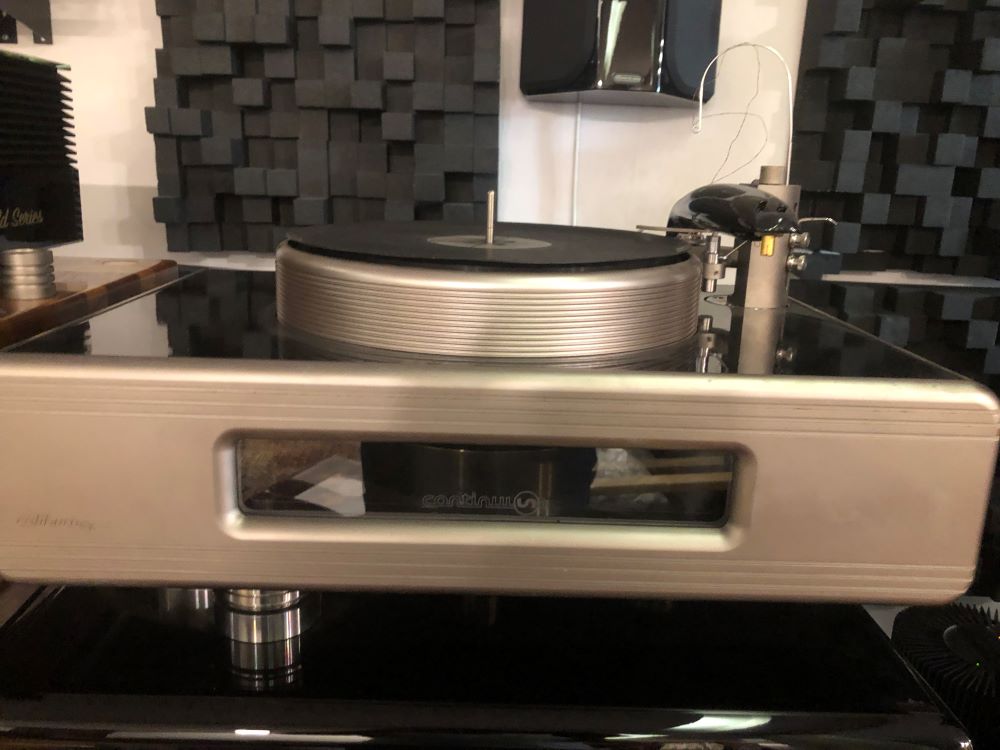
I preferred the TD 124 with the DaVa combination, and being very familiar with the 124 sound (you will read on this site my visits to Schopper, Hanze Hifi, and Swissonor plus other 124 experiences) I liked the 124 and knew its drawback – it could not match the resolution of some of the bigger belts and directs. Therefore at Vess when I heard the soundstage and openness, nuance, speed and slam sound greater on the 124-DaVa combination, I attributed it to the DaVa. The only place the Continuum did better on was bass, and not by much, given that 124 has bass as a relative weak point but still the difference had been much reduced from what I would expect. Normally, TD 124s, Lencos, and Garrards, have less resolution to modern tables, irrespective of which you like. The DaVa had corrected that. I immediately began wondering if this difference would hold true in a system with already a very high resolution like Mike’s, and was eager to repeat the experiment at his.
At Mike’s, playing Joan Field’s Bruch Violin Concerto on Telefunken original, the extent to which the violin soars and the feel of the intensity of her play, with inner inflections of the violin, was clearly more audible on the Dava. The space on Sigiswald Kujiken’s harmonia mundi Chaconne was substantially higher with the Saskia Dava, while was missing with the Etsuro. For Scheherazade 4th movement on Classic records 45, it was a different ball game given the depth, drama, slams, bass, and contrasting textures for various instruments with the DaVa. The DaVa added a couple of layers of depth behind, more space, contrasts and textures in the various instruments, that ended up much more homogenized and flatter with the Etsuro presentations, also observed when we moved the Etsuro to the Saskia. Mike’s entire system raises up a couple of ante as you move to the 4th movement of this classic records 45 rpm, and the DaVa can showcase many more subtleties to the music that the Etsuro glosses over.
The nuance of the violin was relatively greater with the DaVa on the Bruch Scottish Fantasia Speaker’s Corner, as was the size of the stage. The micro and macro dynamic contrast on piano, especially the direct to disk Ikuyo Kumiya Beethoven Apassionata, was in DaVa’s favor, and was also played very well by the NVS Etsuro. I could go on with the Haitink direct to disc Bruckner 7th (third movement), and many others, where the resonance of the instruments, especially trombone and trumpets was more audible with the DaVa. The textures of the vocals and the feel of the hall on Melodiya Winterreise, the strike of the piano, the full rendering of the midbass and bass on the Magda Tagliaferro Electric Recording Company, the growl of the cellos. The DaVa is tonally dense and textured.
On jazz and blues, with the Count Basie (88 Basie Street) and Sonny Boy Williamson, I noticed more contrasts with the DaVa. Hendrix brings an intensity and complexity to the guitaring not very different from the violin on the Chaconne.
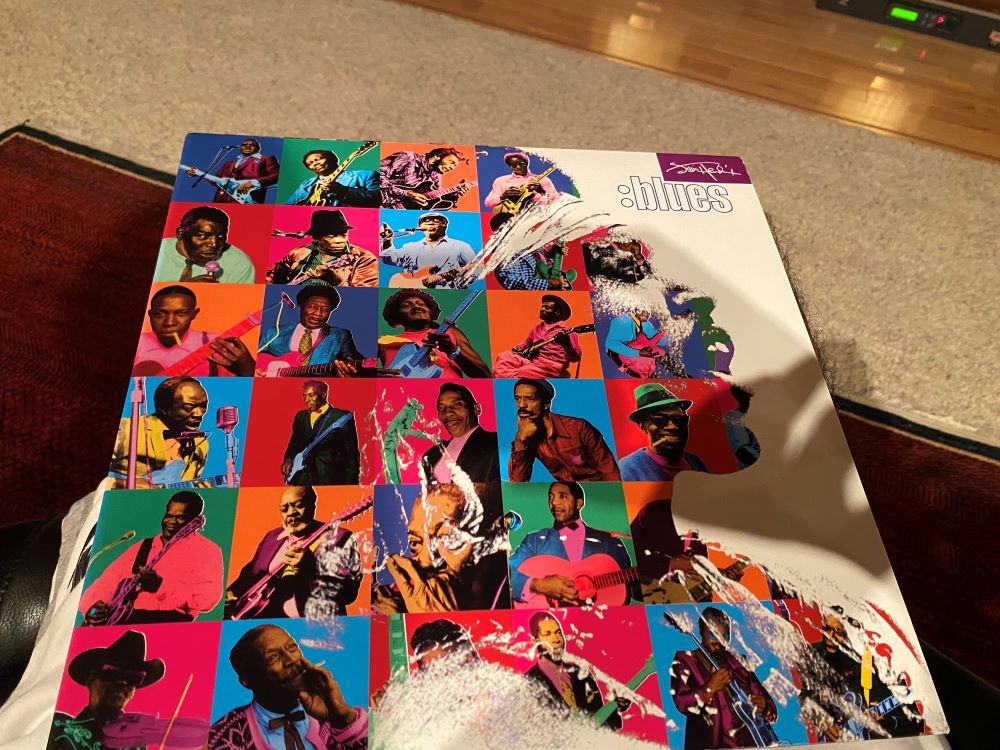
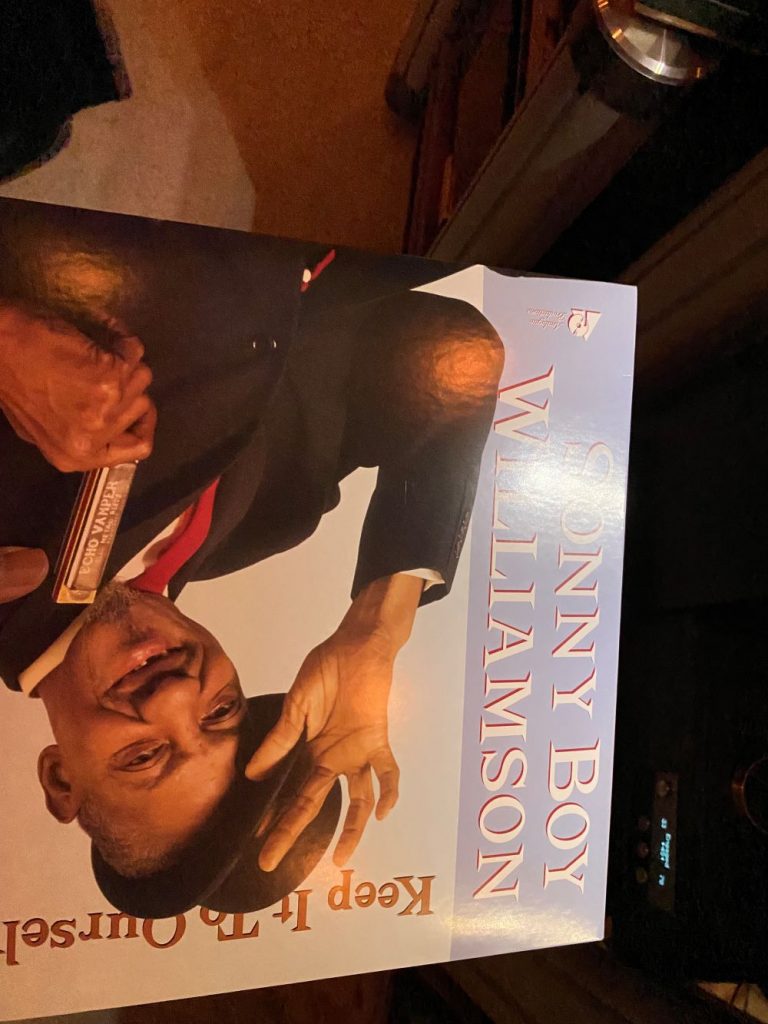
We played jazz, rock (Black Sabbath Vertigo Swirl first press, ACDC, ZZ Top, Led Zep 1 & Physical Graffiti from the classic records 45 that was mastered by Bernie Grundman directly from the tapes, Mike’s most prized collection). On rock and jazz, both Saskia and NVS had more life and drive than the CS. The Saskia DaVa combination was overall the most preferred for jazz. The Saskia DaVa presentation was closest to the Studer 820, and the Led Zep vinyl played on the Saskia DaVa was preferred to the Led Zep tape.
When we replaced the DaVa with the Etsuro on the Saskia, we realized we could also attribute the life and drive quality for jazz to the Saskia along with the DaVa.
Now, was it all hunky dory for DaVa? No. On some jazz and rock records, the DaVa did get bright. I therefore texted the designer, Darius Valiunus, if there was a solution. He guessed we were using a silver SUT, and suggested he has seen this with Silver and DaVa, so copper SUT is recommended. I checked with Leif if he gets brightness with his high resolution TAD Beryllium, and Leif replied no, he had copper SUTs. Mike, however, has multiple options. He would rather hear what the DaVa can do and not do on his silver SUT, which is in built into the EMIA phono, and for those where the DaVa sounds bright, he will simply place the record on one of the other two.
Mike has further commented on What’s best forum that the brightness has now gone, and was probably due to burning in of the EMIA SUTs which were relatively new when I heard them. He also replaced an interconnect in the system which he believes was causing the burn in. His further comments can be read on this thread.
To clarify, there was no brightness on any of my records. DaVa did not get bright on the TD 124 system or on other systems that owners on WBF have posted on. This was a temporary set up issue due to an interconnect and a new SUT at Mike’s on some records, that has now been resolved.
Mike has
Had the Etsuro been replaced by Zyx, Airtight Opus, and other high end cartridges, the attributes of the DaVa would have probably held true. I think it is the most energetic, high resolution cartridge, with speed, slam, inner inflections of notes, extensions both ways, name the attribute and it could be higher than the cartridge it is compared with. Mike’s Dartzeels on the front panel show the wattage that is being supplied to the speakers with each note. With DaVa, the jump on the same music is quite higher than with the Etsuro. The pppp to ffff jump makes you go whoa.
So was this a one way KO? No not at all. I explained what the Dava did well, compared to the Etsuro on the CS Port and the NVS. There were some areas the CS port Etsuro excelled. Now, all along the CS port appeared to be the most relaxed presentation of the three. With the CS, one could listen for hours without fatigue. It seemed to be particularly good at string quartets by gliding through the instruments, and the stage between the speakers was filled in a nice way like it does with mono records. When such a presentation happens, you stop calculating left or right and your mind just relaxes with the coherence. Where a focused presentation for virtuoso instruments was required, the DaVa did better. For rock and jazz, Saskia (with or without the DaVa) and the NVS were better. For large orchestra, the Saskia DaVa added many more layers. But when the DaVa was replaced by the Etsuro, the CS Etsuro was preferred to the Saskia Etsuro on the Scheherazade 4th movement.
Now, the CS port apart from the relaxed presentation with its arm, has the optionality to have a pivot with the DaVa, and that makes it an attractive TT, as you will be able to choose the arm as per your record. In fact, CS Tat2 could be a great value table. It is possible the string driving a heavy 28 kg platter, with a low pressure low flow tonearm, is designed for a relaxed presentation. Adding a Lyra Lambda to the LT arm could liven up things a bit and would be something I would suggest trying over the Etsuro.
When the Saskia had the DaVa replaced by the Etsuro from the NVS, I preferred the CS on most classical music from solo violin to large orchestra as compared to the Saskia-Esturo. The Saskia did do some of the size and space to show it had supplemented the DaVa, but now with the Esturo on both, did not have the same spatial coherence that the CS Port did. When we had compared the CS Port to the NVS with the Etsuro, the NVS seemed to have shared the honours with the CS. In fact, on Beethoven Cello Sonata (Rostropovich Richter Philips ED2) NVS had been preferred to the Saskia Dava, and had done excellently on the piano pieces. We never got to try the DaVa on the NVS, but that could have been the ultimate combination as well.
Phono cables on CS Port and the NVS were from LFD in the UK, and the Saskia had a dongle from LFD, a cable that connected the tonearm to the interconnect that joined up to the phono. I cannot isolate the dongle on my experience, but Mike will attribute some of the Saskia performance to it.
So, to summarize:
- Order the DaVa. I did, the reference with the PSU. There is an 8-month wait. If you don’t like it is easy to sell as people will gladly jump the queue. But I think it is the only cart most will need, and for some it will be the second cart if not the first because they might have stumbled on to a special combination as the first. It surely is the most complete cart in terms of checking off sonic attributes and excelling on them. Whether it does the final emotional magic for you will be system dependent. I think for dynamic cones and planars, it will be the primary cartridge. For SETs horns, I will give a run alongside a Vyger Red Sparrow. I seldom order something I like because I am long options…I can exercise it in the future when I choose to. But DaVa at this price is an option that may soon expire.
- You need a good table. Once you keep out the bad tables, and end up with a good table, the cartridge matters more and obviously the matching arm
- The CS Tat2 with the pivot carrying a DaVa, could be excellent value for money. Rock and jazz are not CS’ strong points on the LT so if your choice is primarily those genres, I would stay away unless you are adding a pivot. If easier listening is a goal, you could try this one out. But add the pivot and it should balance out for all genres.
- The Primary Control NVS might have been the best turntable tonearm combo at Mike’s, just that in this visit it was eclipsed by the DaVa cartridge. Given how well it did on some records despite not having a DaVa, shows the quality of the table arm combination. Because people have negative perceptions about DDs, I feel compelled to add that on flow, tone, weight, NVS was as good as the other two. One thing to note, NVS was the only one with active isolation, which Mike feels is effective for direct drive TTs which have self-noise.
- After Mike’s trip my interest in tables is now less as the audiophile noise has calmed down. If I was forced to live with only one table from Mike’s, I could choose any of the three.
- When I visited Mike, I was in a linear tracking analysis mode, and was expecting more focus on the CS Port as well as the on sonic difference between idlers, belts, and DDs. I came back writing about and ordering the DaVa.
- I plan to hear the DaVa in Leif’s and a couple of other systems, so will keep you posted.
Rest of the System
We did a quick compare of the EMIA phono to the internal Dartzeel phono. The EMIA seemed to have much better tone and timbre, so we stuck to the EMIA. The Dartzeel has a slightly more back of the hall feel, but apart from that did not match up to the EMIA phono.
Since I last visited, he has upgraded his Dartzeel 458 to 468, brought in the three tables and the cartridges, the EMIA phono, and made some changes to tables and tweaks adding 22 Daizas. The staging, bass response, linearity down to sub 10 hz levels, and the incredibly low noise continue to make Mike’s system a must visit. Where else can you compare such analog gear, find mental peace with your queries, and hear Led Zep in their full rawness.
Occasionally we also listened to the 250k Wadax dac and server combination. When Mike played some recordings including an Alice in Chains unplugged, it was easy to switch from the analog and listen. Mike also demonstrated that when music chosen from his hard drive was also streamed from Tidal or Qobuz, it sounded almost similar, proving how good the streamer was, because normally I find Tidal and Qobuz to be lower quality than the files. When I chose violin concertos or some classical piano, depending on the recording it had similar issues to other digital when up against good analog pressings. In no way am I saying you can suspend disbelief compared to tape or to good analog LPs, but if streaming and music search was a prime objective, it would suffice. Whether the price justifies it I can only comment if I ever compared it to other digital, which I did not as my primary excitement stayed with the analog. I have by no means done any sort of deeper investigation into the Wadax sound to be able to talk about it further.

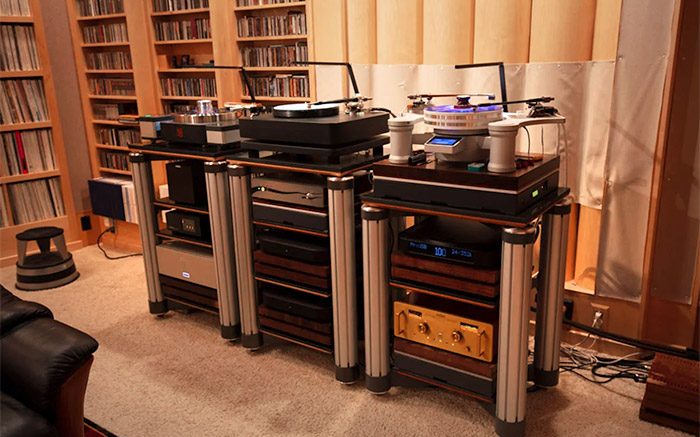
Be the first to comment on "Saskia vs CS Port vs Wave Kinetics NVS; DaVa vs Etsuro; EMIA phono"